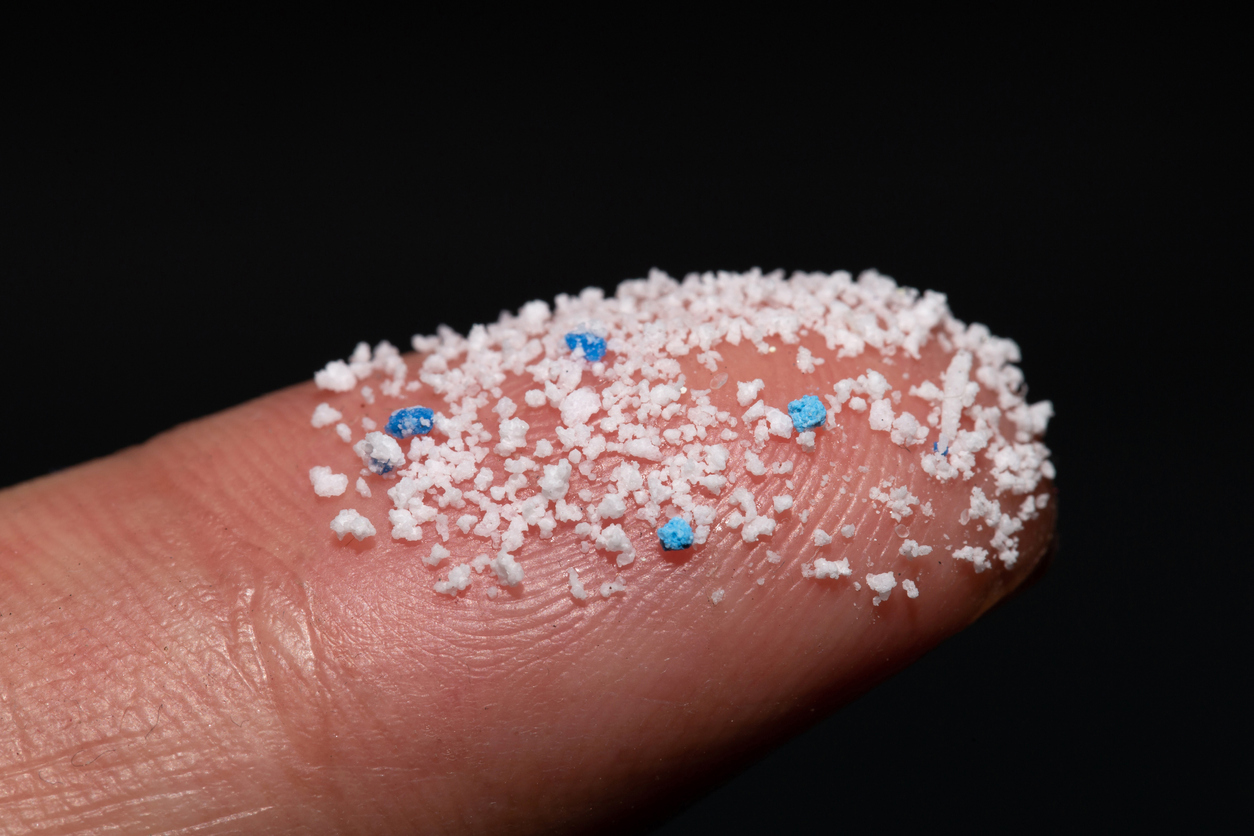
As vehicles drive on roads, their tires release small particles. Clothing made from synthetic fibres such as polyester, acrylic and nylon, release small fibers through everyday wear and washing. Even though you can’t see many of them, microplastics flow into the environment every day.
In the environment, plastic just keeps breaking down into smaller pieces of plastic: first, what’s known as microplastics, and then nanoplastics.

“Some microplastics can be seen by the naked eye, but smaller microplastics can only be seen using a microscope,” says chemical engineering professor Nathalie Tufenkji, Tier 1 Canada Research Chair in Biocolloids and Surfaces. “They can range from a few millimetres in size to a few micrometres [0.001 of a millimetre]. And if one microplastic breaks down into nanoplastics, you could end up with millions or billions of nanoplastics.”
Down the drain
Synthetic material that goes down our sinks, toilets and shower drains can break down and potentially release microplastics into the wastewater pipeline. Although water treatment facilities remove some of these particles, microplastics and nanoplastics are nonetheless being found in natural waters, oceans, rivers, sediment, on farms and in the air.
Wastewater is not the only source of microplastics. Some fragile plastic goods in our houses break down and make their way into our drains, too.
“We know that [even some] bulk products can break down into microplastics,” shares Tufenkji. “Studies investigating microplastics in wastewater are finding quite a bit of polyethylene.”
Tufenkji and her team are making great strides in removing microplastics and nanoplastics from wastewater. In 2020, they ran successful simulations wastewater treatment, removing 97 per cent of polyester and 99 per cent of weathered polyethylene fibers.
Still, there is much progress to be made in understanding the harm they cause, and how to prevent their release into the environment. Specifically, Tufenkji says we need to better understand:
- How does the human body process these chemicals, particles and material?
- What is the potential effect of these diverse particles?
- How does shape and size influence their effects?
- Do the additives have different health effects?
- Do we just eliminate these microplastics when we go to the bathroom?
“One of the challenges with plastics is that they’re made of carbon,” says Tufenkji. “There is [already] a lot of carbon in soil. So when we’re looking for microplastics or nanoplastics in the environment, it’s not like looking for a needle in a haystack—it’s like looking for a specific piece of hay in a haystack.”
“When we have better techniques and technologies that allow us to detect microplastics and nanoplastics in different environments, then we can address some of these questions.”
Masks and winter
Since the beginning of the COVID-19 pandemic, improperly discarded face masks have become a common sight on sidewalks and roads. To explore whether cycles of freezing and thawing expedite the release of microplastics, Tufenkji’s team exposed masks to water and simulated sunlight to the masks. They found that masks give off “a lot of plastic fibers.”
With an estimated 129 billion masks and 65 billion gloves used per month across the globe, Professor Tufenkji argues that we need to be very careful with our mask disposal to avoid a wave of microplastics entering our environment.
“We are not sure of the impacts, but it is clearly an undesirable scenario,” says Professor Tufenkji.
“At the end of the day, reducing microplastics at the source is a priority,” says Prof. Tufenkji. “One relatively easy thing to implement is to reduce the use of single-use plastics. You can just imagine the number of single-use plastic bags, the number of single-use bottles, single-use plastic cutlery and plastic wrapping. I think that is something Canadians can do now to help protect their own environment,” says Tufenkji.
To help Canadians make better choices, Tufenkji is one of several scientists who has teamed up with Ocean Diagnostics, a B.C. environmental impact company that is developing new techniques and technologies to help scientists detect microplastics, on its current public awareness campaign about what microplastics are and where they come from, how they affect our environments and communities, and what the public can do about it.
“We are moving in the right direction,” she says of the global fight against plastic pollution. “There is a lot of research being done… In the next decade we are going to see the emergence of new materials and new technologies to help us deal with plastic pollution. We are also seeing a shift in customer behaviour and consumer interest in the problem. I am optimistic that we are going to see improvements with respect to scaling back plastic pollution.”

Thank you for this very informative article. There is a lot of talk about incorporating plastic waste in road surfaces. Some such roads have been built in India and Thailand(?). I would like to know if this is a potential source of microplastics as the road deteriorates. I suspect that it is. That plastic waste will then be unrecoverable.